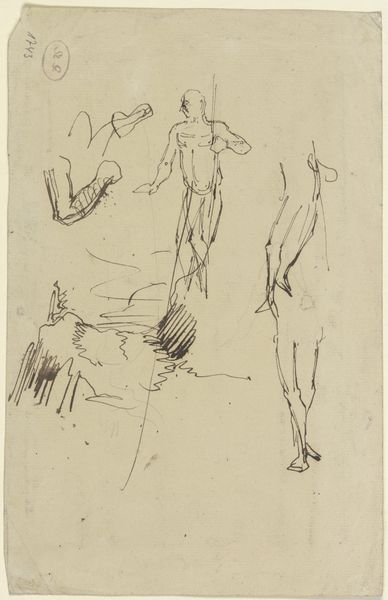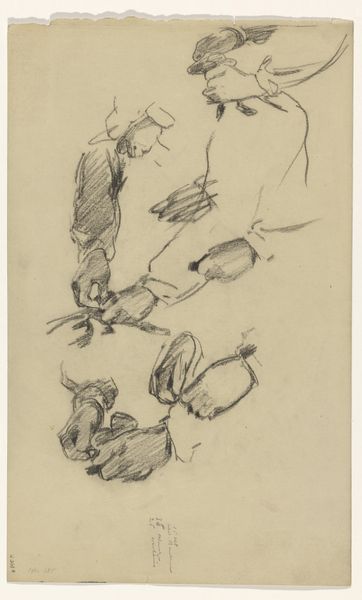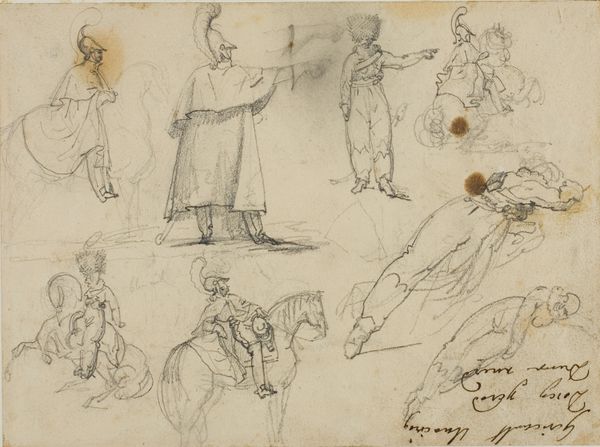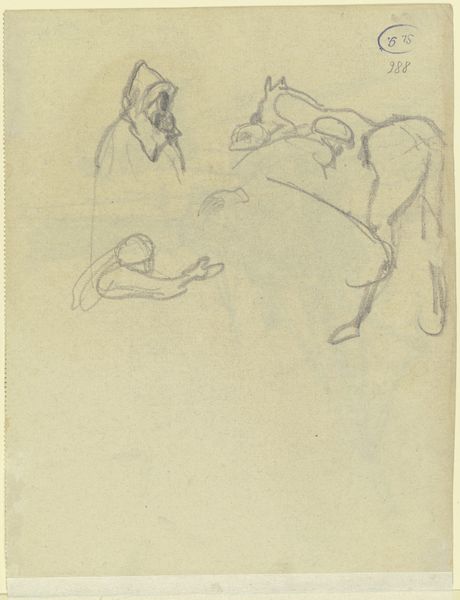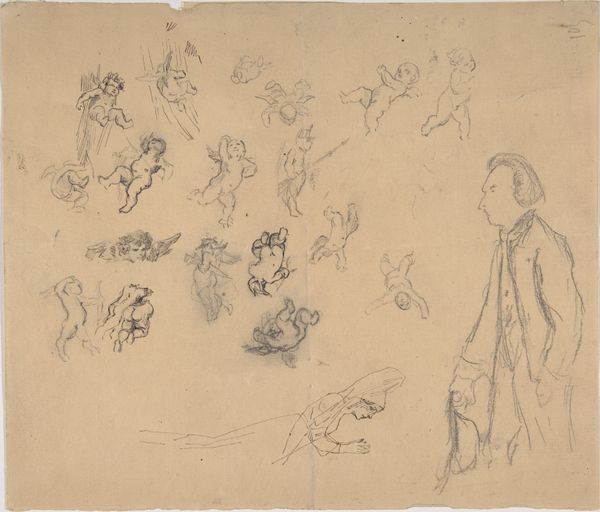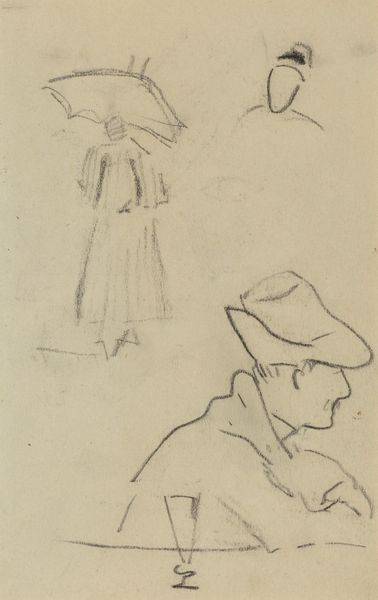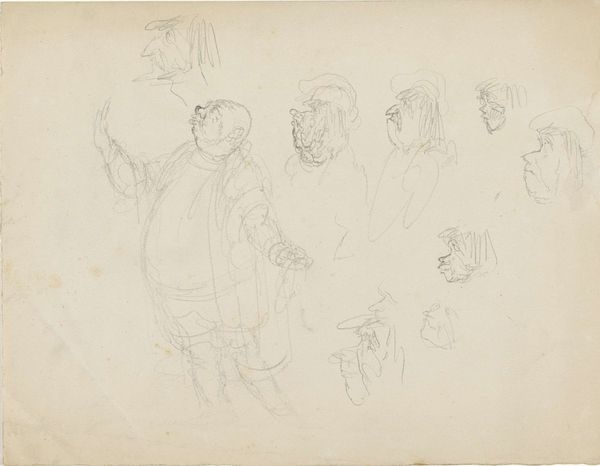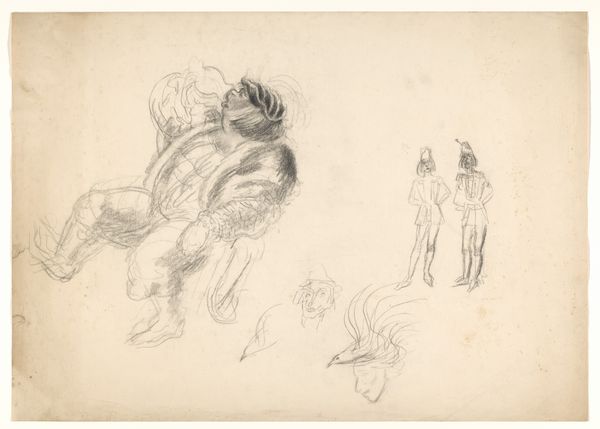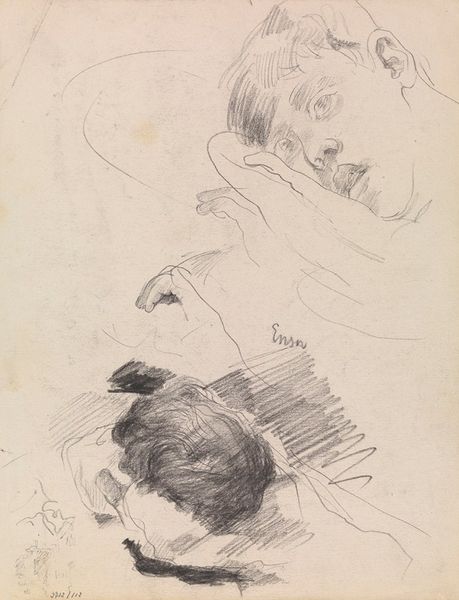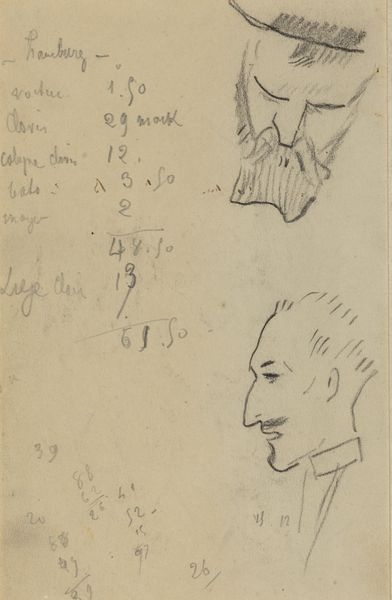
Sheet with figures, details of hands and feet 1860 - 1900
0:00
0:00
drawing, print, paper, pencil
#
portrait
#
drawing
# print
#
figuration
#
paper
#
pencil
#
academic-art
#
profile
Dimensions: sheet: 8-3/4 x 6-7/16
Copyright: Public Domain
Curator: Here we have a fascinating sheet of studies by Félicien Rops, aptly titled "Sheet with figures, details of hands and feet," dating from somewhere between 1860 and 1900. The medium is primarily graphite on paper, offering a glimpse into Rops's artistic process. Editor: It’s compelling how Rops uses stark contrasts; it is this interplay of light and shadow across various poses, creating a sense of dramatic tension across the sheet, don't you agree? Curator: Indeed, the compositional arrangement is of paramount interest. Rops, seemingly unconcerned with traditional perspective or unified space, distributes his figures and anatomical studies across the page in a seemingly random manner, giving primacy to the materiality and intrinsic elements, such as the tonal range of the pencil work, the linear quality of the individual marks, and the negative space. Editor: The clustering of isolated body parts does suggest a deeper symbolic narrative at play. I think of fragmented identities and the psychological weight they carry. A disembodied hand holding a pipe…it brings forth strong associations with social status or perhaps the transience of earthly pleasures. The juxtaposition of these figures and body parts create an evocative, though not always straightforward, statement. Curator: That’s a valid interpretation. Yet, to insist on any singular, or even coherent, symbolic meaning seems reductive. Isn't it possible that Rops was principally interested in exploring form, shadow, and texture independent of predetermined meanings? Editor: Possibly, but for viewers in the 21st century, accustomed to a visual culture saturated with layered meanings, it's almost impossible not to seek out the possible interpretations beyond mere formal exercises. Even the specific rendering of the face, the way Rops highlights its age and individual character through delicate hatching lines… it communicates the essence of human experience beyond the physical form. Curator: Perhaps. And in the end, doesn’t the co-existence of both readings enhance our engagement with the work? The objective precision alongside the possibility of latent symbols. Editor: I believe so. Rops gives us access into human conditions that have resonated over time through simple body imagery. It gives an amazing glimpse into the complex relationship between vision, interpretation, and culture.
Comments
No comments
Be the first to comment and join the conversation on the ultimate creative platform.
